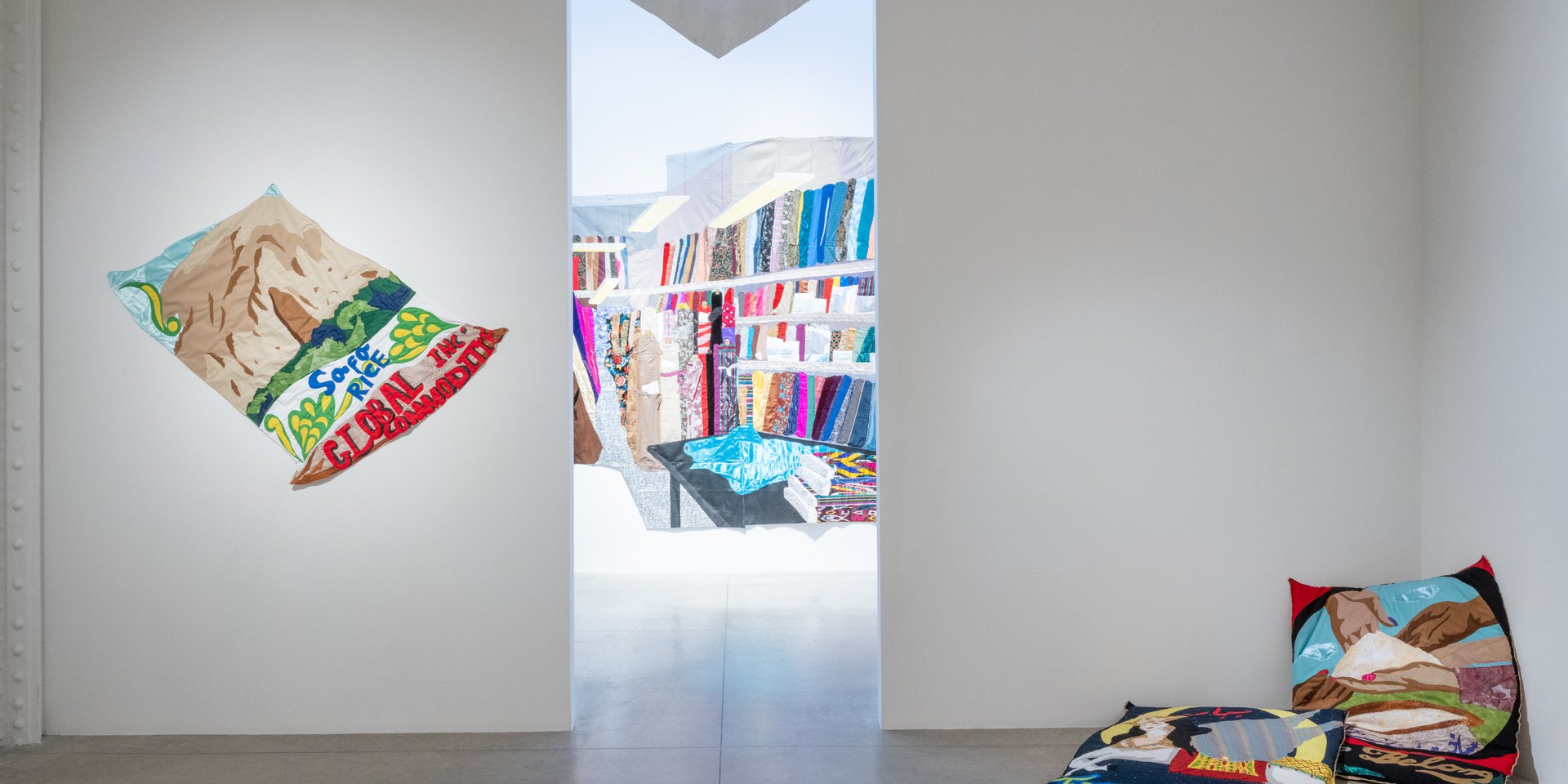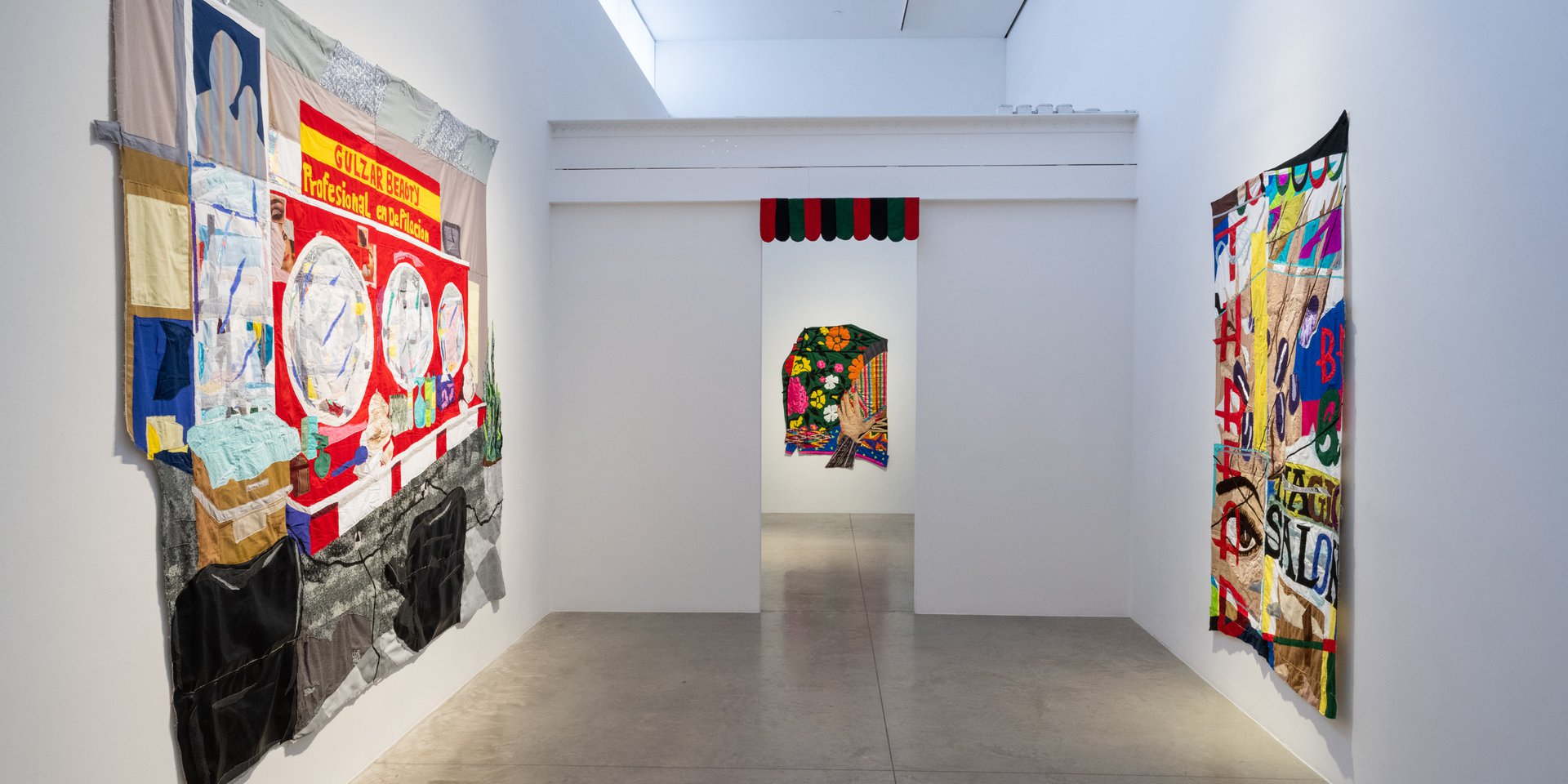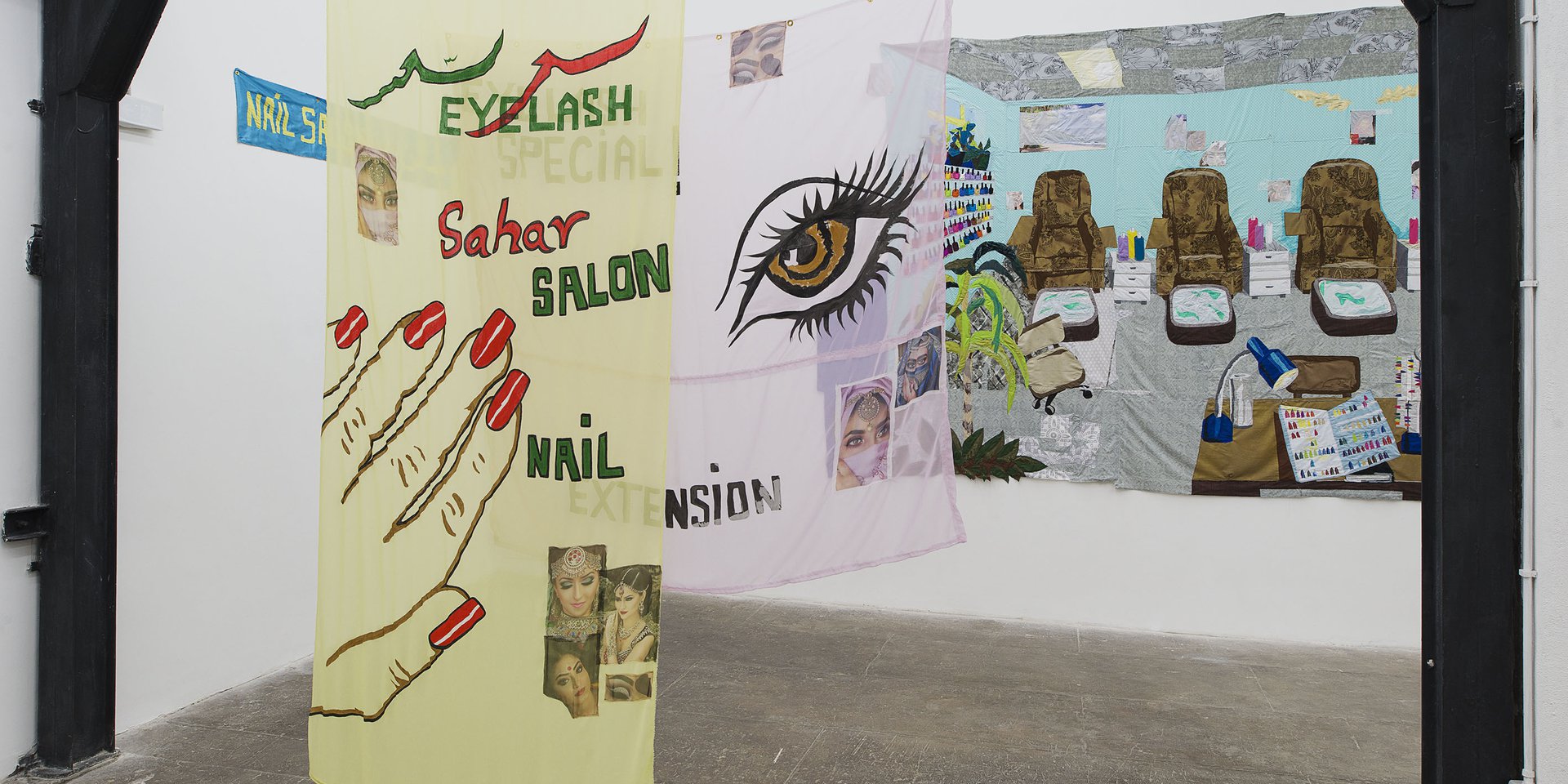In Discussion with:
Hangama Amiri
Embracing the Process and Connecting Frontiers
Hangama Amiri interview with Katya Conrad.
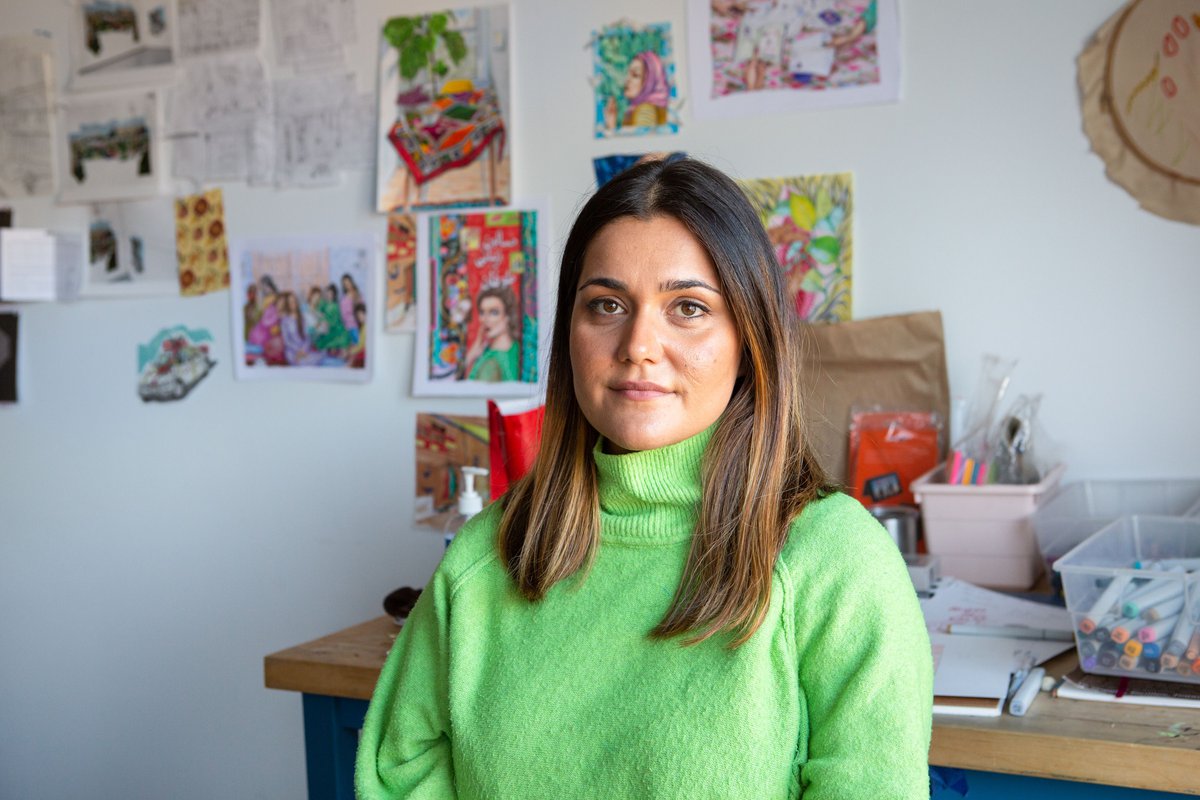
Hangama Amiri
Courtesy of the artist
Hangama Amiri is an artist whose work draws on lived experiences from Afghanistan, Canada and the US. Amiri’s work spans across various media, including painting and textile which she uses to examine the daily lives of women in Afghanistan. Amiri’s practice involves the exploration of memory, archival research and social structures to create pieces that comment on objects and aspects of life that are often looked over, highlighting disparities between the perception and reality of lived experiences.
Amiri obtained a BFA from NCSAD University, Halifax, Nova Scotia and an MFA from Yale University in 2020 from the Painting and Printmaking Department. Amiri has also been the recipient of numerous prestigious award including the Arts Nova Scotia Grant (2018); Canadian Fulbright and Post-Graduate Fellow, Yale (2016); Lieutenant Governor’s Community Volunteerism Award (2011). Amiri has completed residencies at prominent institutions such as the Long Road Projects, Jacksonville, FL (2019); World of CO Residency, Sofia, Bulgaria (2018); Joya AiR Residency Program in Almeria, Andalucia, Spain (2017); Banff Centre for Arts & Creativity (2017).
“Art shortens the distance between people, cultures, and communities; it helps us learn, feel and express certain things that cannot be done through other forms of language.”

Hangama Amiri, Still-Life with Fried Chicken and Fries, 2021
Chiffon, muslin, cotton, polyester, silk, acrylic paint, and found fabric, 114.30 × 99.06 cm (45 × 39 in)
Courtesy of the artist and T293 Gallery
How did you start experimenting with textures and materials?
Was there a specific moment that inspired you to start mixing paint and textiles?
I started to experiment with cloth and fabric during graduate school at Yale. Before that, painting was my main practice, I was interested in capturing the cultural specificity in materials and fabrics such as texture and patterns through the medium of paint. However, I couldn't always achieve or deliver what I really wanted, which was the textures that could be felt or even give a sense of touch. The more I reflected my relationship with painting, the more distant I grew from it.
The time at Yale was a very crucial and inspiring time for my studio practice. Working among a diverse group of artists who were enthusiastic about new mediums and new ways of experiencing them really encouraged me to engage myself more in my practice. That was one of the reasons that I began to use fabrics that were culturally familiar to me as a step forward from my earlier practice, which I mimicked the texture or pattern of fabrics, such as “Afghan traditional clothing,” through paint.
Now my practice focuses on directly engaging myself in cutting and stitching pieces of actual fabrics from Afghanistan, Pakistan, regions in Central Asia and even South Asia into canvas. Through the process, I learn more about the fabrics’ history, their relations with the people, and their relations to my memory as a young girl in Afghanistan. It brings me so much joy remembering how I was always surrounded with beautiful bright clothes that were worn by my mother and my aunts who always tailored their own dresses. So, I guess using textiles was always a part of my life, I just came to use it a bit later in my art career.
Your practice has evolved from focusing on rural landscapes to focusing on urban environments and spaces such as salons and bazaars.
How have you found that your process changes when navigating these different environments through your artworks?
The rural landscape in my paintings were much driven by the idea of topophilia. When I immigrated to Canada in 2005, I was drawn to the nature, places, and their relation with sense of identity. I was interested in learning and painting these relational ties between identity and place, and how we developed certain instincts, feelings, or love for new places that were chosen for us to call home. Perhaps it was a way for me to express my diaspora experiences living in foreign lands and taking a romantic approach to relate to their histories, cultures, and natures. It was somehow a space for healing and tranquility for me during the process of making Canada my second home.
At the same time, the idea of collectivity is also very interesting to me. Perhaps it has something to do with my upbringing of being a refugee—always on the move, always looking in from the outside, always searching for new beginnings and the next place. In my textile pieces, spaces like the bazaar become vessels for these collective memories. Memories of going to the Salons with my aunts and cousins or just roaming around the bazaar are so precious to me; they connect me to the community that I was so inspired and happy growing up in.
Through portraying or re-constructing these spaces in my work, I’d also like to explore the concepts of heterotopia and topophilia. Heterotopias are worlds within worlds, as the inner ones mimic yet contrast what is outside. Topophilia, on the other hand, is a strong sense of space in relation to our identity. They are both formed through ideas such as memory, identity, and sense of belonging, and these are the core concerns in my works.
Whether it is the Bazaar-themed textile pieces or even my earlier landscape paintings, they were all my attempts and explorations in creating small worlds that I can call home.
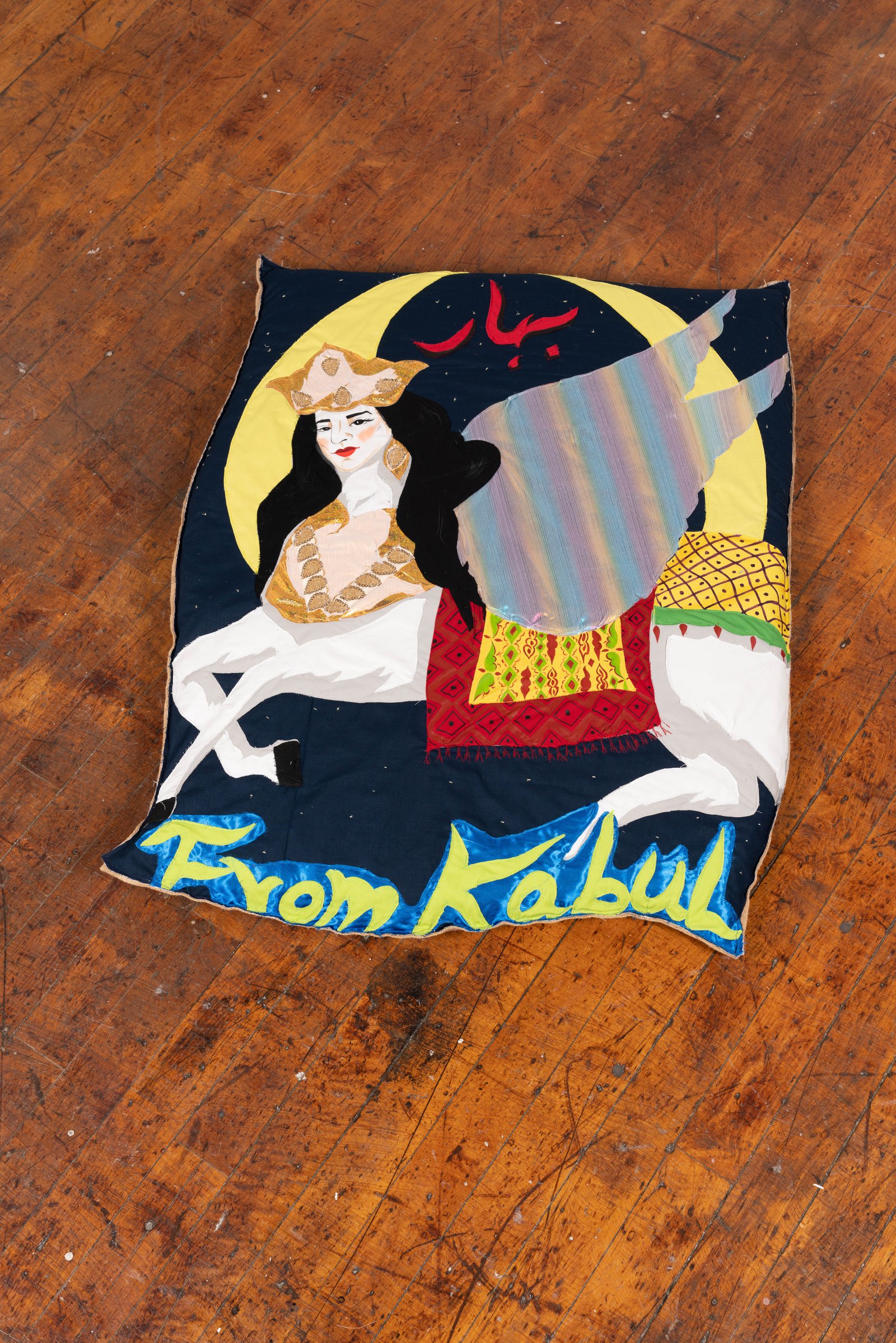
Hangama Amiri, Bahar, From Kabul (Ricesack #1), 2021
Chiffon, muslin, cotton, polyester, silk, faux leather, acrylic paint, burlap, and found fabric
109.22 cm × 81.28 cm × 8.89 cm
Courtesy of the artist and T293 Gallery
“My own experiences of migration and immigration and experiences with different cultures, traditions, histories, and languages support me to create 'frontiers' – to connect them.”
How do you think art can help to bridge cross-cultural dialogues?
How have your experiences living in Afghanistan, Canada, and the US, influenced your creative process and view of art-making as a whole?
For me, art in its most ambiguous body always has a certain visual power that carries the understanding of cultures and history. Making art or creating an object that shares stories is where cross-cultural dialogues can happen. Art shortens the distance between people, cultures, and communities; it helps us learn, feel and express certain things that cannot be done through other forms of language.
In my textile pieces, I think a lot about the word ‘frontier.’ Its cultural, historical, and linguistic connotations inspire me to make my practice a way to connect the two worlds—The East and the West, in the context of this question. Connections can simply start with learning and creating something that gives us access to learn about a culture or a history through an ordinary object, signage or words is my way to bridge the cross-cultural dialogues.
My own experiences of migration and immigration and experiences with different cultures, traditions, histories, and languages support me to create those “frontiers” to connect them. At the same time, they open up spaces for myself to dive back into these experiences, to re-explore their relationships to my understanding of the world.
The “frontiers” are also reflected in my decisions of the fabrics or textiles I choose for my work for the cultures, tastes, or aesthetics they may represent.

Hangama Amiri, Sahar, Nail Salon and Eyelash Extensions #3 (detail), 2020
Chiffon, acrylic paint, and inkjet prints on silk, 311.15 × 217.17 cm (122.5 × 85.5 in)
Courtesy of the artist and T293 Gallery

Hangama Amiri, Sahar, Nail Salon #1 (detail), 2020.
Cotton, chiffon, muslin, silk, suede, paper, clear plastic, inkjet prints on paper, marker, polyester, and found fabric, 289.14 × 387.35 cm (111 × 152.5 in)
Courtesy of the artist and T293 Gallery.
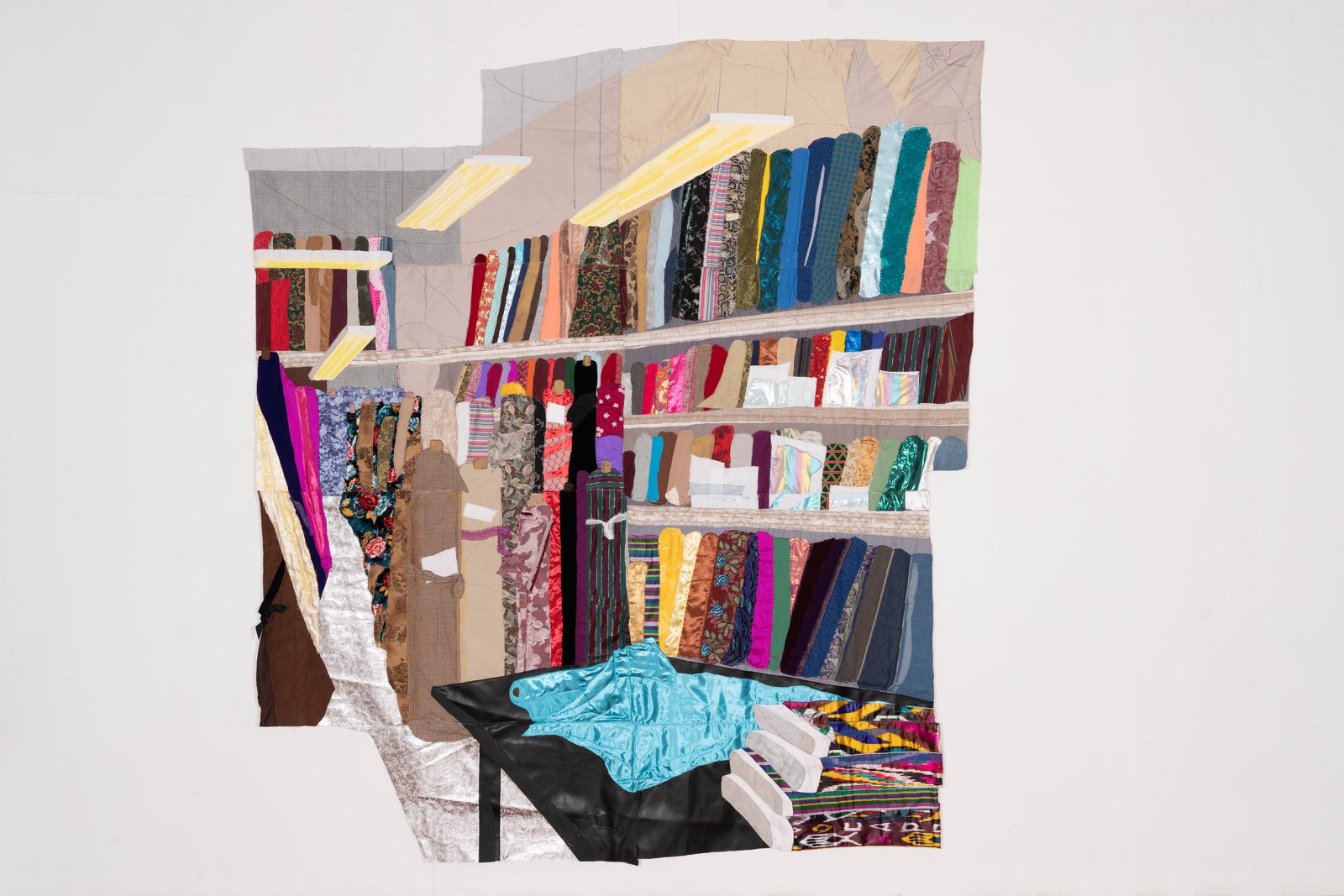
Hangama Amiri, A.K. Fabric Shop, 2021
Chiffon, silk, satin, muslin, cotton, lace, polyester, suede, paper, iridescent paper, denim, ikat printed fabric, faux leather, color pencil on fabric, velvet, camouflage, and found fabric, 113 × 99 inches
Courtesy of the artist and T293 Gallery
Can you tell us about any upcoming exhibitions or projects we should look out for?
I am very excited to show my new series in a solo exhibition at David B Smith Gallery which opens this April 29th in Denver, Colorado. Later this Fall, I have a group exhibition, “Pop Art from South Asia” curated by Iftikhar Dadi and Amrita Jhaveri at the Sharjah Art Foundation through September to December, 2022, then I am working towards a solo exhibition at Union Pacific Gallery in London, UK which will take place in late Fall 2022.
“Whether it is the Bazaar-themed textile pieces or even my earlier landscape paintings, they were all my attempts and exploration in creating small worlds that I can call home.”
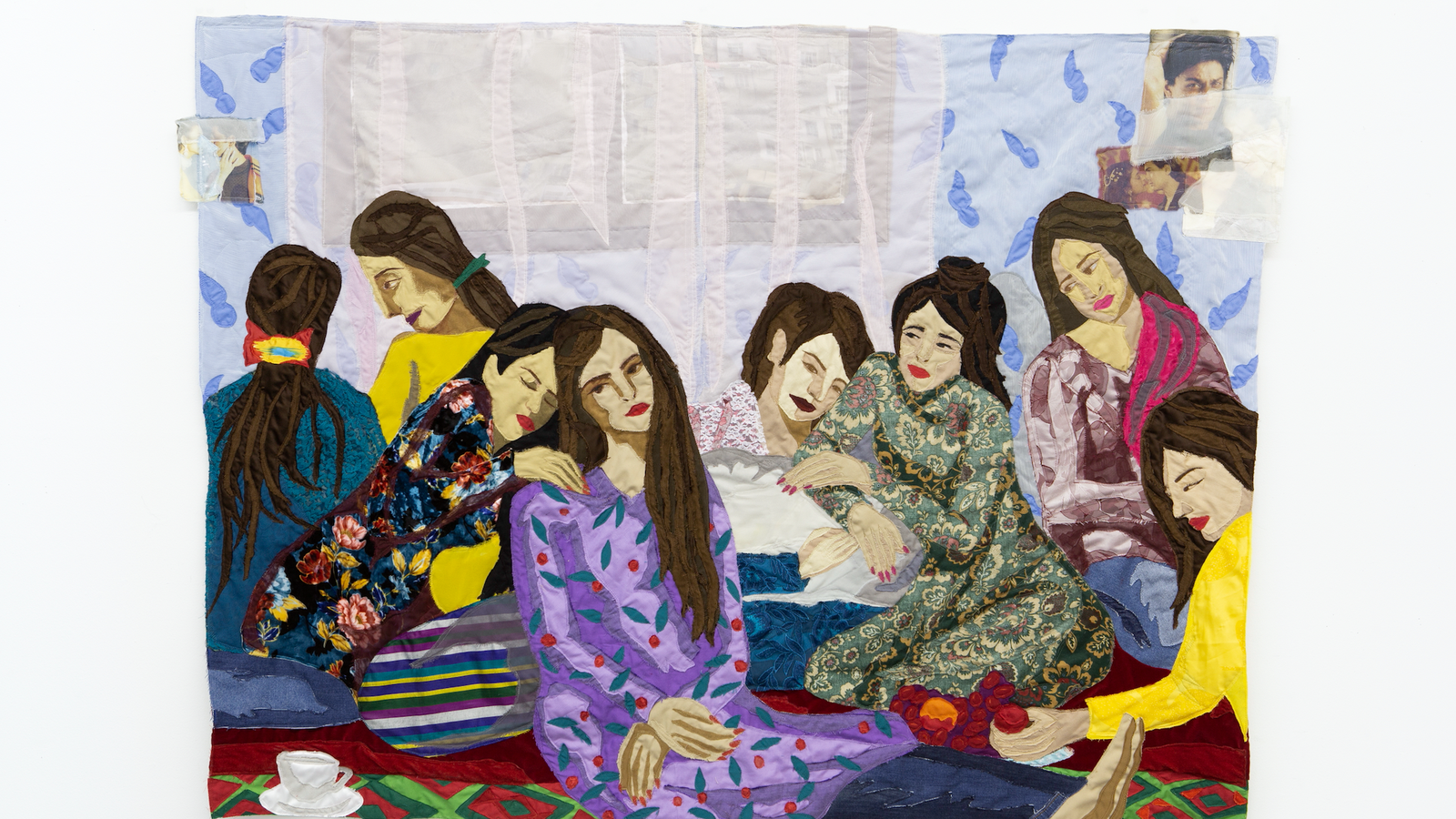
Hangama Amiri, Eight Seated Women, 2021
Chiffon, cotton, muslin, polyester, velvet, silk, inkjet-print on chiffon, paper, and colour pencil on fabric, 112.92 × 152.4 cm, (44.6 × 60 in)
Courtesy of the artist and T293 Gallery
